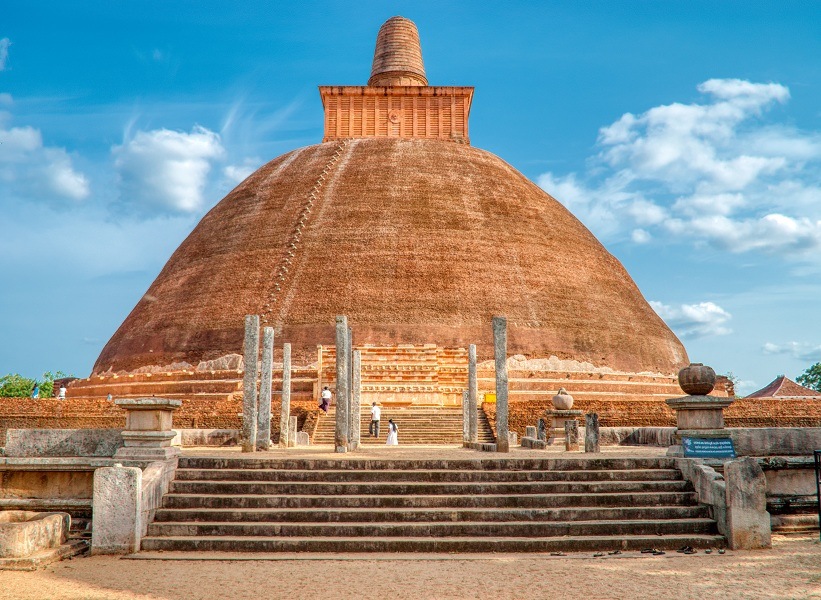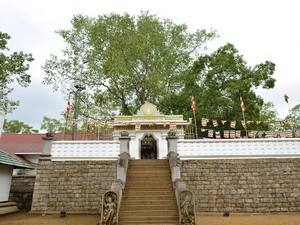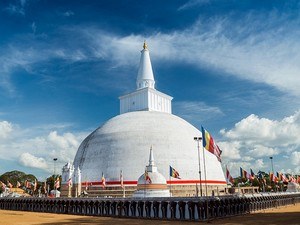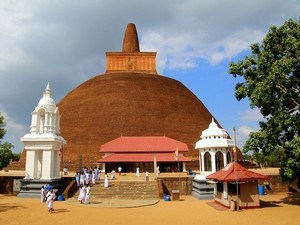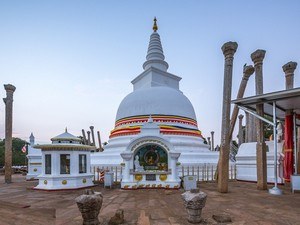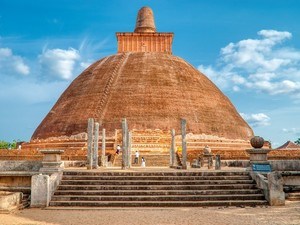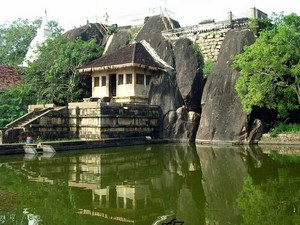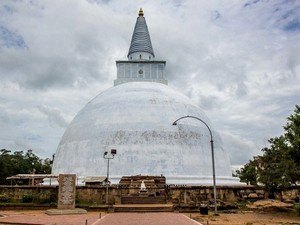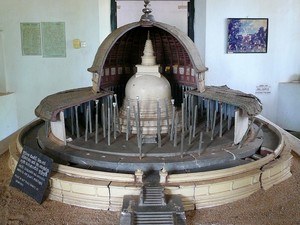Jetavanaramaya Dagoba, Anuradhapura - Timings, History, Architecture, Best Time to Visit
 #5 of 15 Places to Visit in Anuradhapura
#5 of 15 Places to Visit in Anuradhapura
 Distance (From Anuradhapura): 2 Kms
Distance (From Anuradhapura): 2 Kms
 Trip Duration (Including Travel): 30 Mins - 1 Hr
Trip Duration (Including Travel): 30 Mins - 1 Hr
 Place Location: In The Mahamewna Gardens
Place Location: In The Mahamewna Gardens
 Transportation Options: Cab / Walk/Trek
Transportation Options: Cab / Walk/Trek
 Travel Tips: Entry ticket includes entry to all the historical sites except Maha Bodhi & Isurumuniya
Travel Tips: Entry ticket includes entry to all the historical sites except Maha Bodhi & Isurumuniya
At a distance of 1.5 km from Maha Bodhi Temple and 2 km from Anuradhapura Railway Station, Jetavanaramaya is an ancient Buddhist stupa situated in the sacred city of Anuradhapura, Sri Lanka. Located in the Mahamewna Park, it is one of the oldest stupas in Anuradhapura and among the sacred places to visit in Anuradhapura while holidaying in Sri Lanka.
At 400 feet, Jetavanaramaya was the tallest stupa in Sri Lanka and the third tallest ancient structure in the world when it was built by King Mahasena of Anuradhapura (273-301). He initiated the construction of the stupa following the destruction of the Mahavihara and was completed by his son Maghavanna I. It is believed that a part of a sash or belt tied by the Buddha is preserved here. The structure is significant in the island's history as it represents the tensions within the Theravada and Mahayana sects of Buddhism. Later, King Parakramabahu in the 12th century rebuilt this stupa to the current height of 232 feet, a reduction from the original height. However, eventually, Anuradhapura was abandoned as Polonnaruwa became the center of governance in Sri Lanka, and the ancient city was covered with jungle until 1981 when UNESCO took the task of renovating the Jetavanaramaya Monastery Complex as part of UNESCO-Sri Lanka Cultural Triangle Sites project.
Today, the stupa is no longer the tallest, but is one of the largest in the world, with an area of over 5 hectares and housing over 10,000 monks. Approximately 93.3 million baked bricks were used in its construction. This stupa belongs to the Sagalika sect. Jetavanaramaya Stupa was built on an enormous raised platform that originally had four entrances (vahalkadas). Currently, two of the four vahalkadas have been excavated, and the southern entrance was the most elaborate with the carving of elephant heads, cobra king (Nagaraja) and an unidentified female figure. There are 9-m wide stairs in each cardinal point to access the stone-paved terrace. Stone inscriptions in the courtyard give the names of people who donated to the building effort.
Within the complex, there is a museum known as the Jetavana Museum which houses various artifacts from the 2nd century BC to the last quarter of the 3rd century. Most of these objects were recovered during the excavation such as carvings, of Buddha statues, guard stones, jewellery, ear ornaments, ivory carvings, bangles, pottery, three-tiered urinal pot, precious stones, imported and local ceramics, over 300,000 beads of various materials, Hindu and Buddhist ritual objects, Roman and Indian coins, and painted slab of stones. Behind the museum is the beautiful Buddhist railing, which is a rectangular structure with four entrances in four cardinal directions.
To the west of the stupa, there was a vaulted Image House, the biggest of its kind in Anuradhapura and Polonnaruwa Era. It is said that King Sena I of Anuradhapura (r. 846 - 866 CE) built this image house. The monolithic door to enter this image house was 8.3 m (27 feet) tall, and the building was 15.25 m tall. A lotus base found inside the chamber indicates that there was a huge Buddha statue enshrined in this image house. The Chola invaders destroyed the image house and the huge Buddha statue within. One can also visit the chapter house, a refectory, monks living quarters and the cremation chamber of Mahinda Maha Thero inside the monastery complex.
Timings: 8 AM - 5 PM
Entry: USD. 25 for Foreigners & USD. 12 for SAARC Nationals (Including entry to all the historical sites except Maha Bodhi & Isurumuniya)



